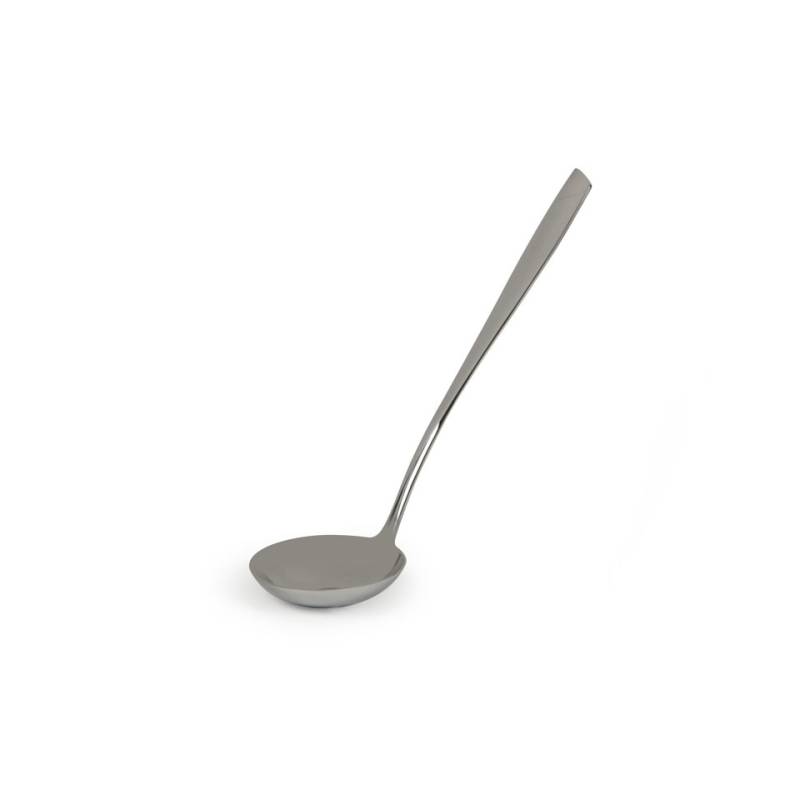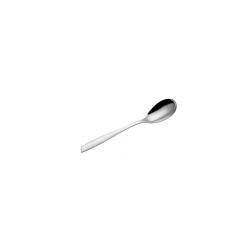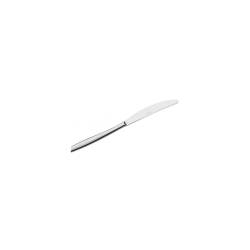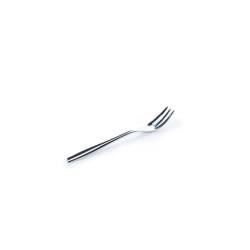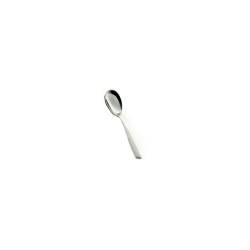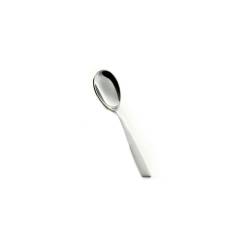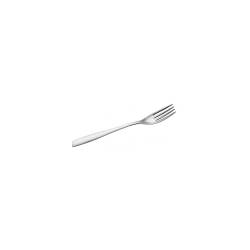The Eleven Eme Stainless Steel Ladle 29 cm is a product with a contemporary design that is sure to be trusted.
LADLE FOR SOUPS, STEWS AND MORE
The ladle is a must-have utensil in both home and professional kitchens because it is ideal for serving soups, stews and other dishes.
ELEVEN EME LADLE: DESIGN AND FEATURES
Eme's Eleven series is designed for environments that require originality, not only on special occasions but also in everyday life, thanks to the modern style and soft roundness of the spoon.The handle of the Eme ladle is made pleasant by the oblique cut on the end of the handle, a distinctive feature of the Eleven series.
PRESENCE OF RUST STAINS ON CUTLERY AND KNIFE BLADES
Background:THE DIFFERENT TYPES OF STEEL
EME cutlery (spoons, teaspoons, forks, ladles, etc.) is essentially made from
two different types of steel alloys:
AISI*304 - austenitic steel commonly called 18/10
AISI*430 - ferritic steel commonly called 18/C
EME KNIVES are exclusively produced from the following alloy type :
AISI*420 - hardenable steel
In the composition of 18/10 steel for the production of cutlery there may be a
percentage of Nickel, while in the latter it is totally absent.
It is the only hardenable steel and through this heat treatment increases its
mechanical properties that allow, for example, knife blades to be sharp.
Both types CANNOT rust, if by rust we mean iron oxide.
Over time, however, dark and/or rusty spots may appear on the surfaces, caused by an
external contamination of the flatware; not an actual attack of the stainless steel.
The most common causes of the generation of these stains are the rubbing of cutlery with
steel wool dunnage, contact with iron/steel ware, or contamination with water with a
high dissolved iron content.
However, these stains are easily removed with a steel cleaning product.
Small rust stains can also form on knife blades, especially after
washings in the dishwasher.
*American Iron and Steel Institute (AISI)
THE POSSIBLE CAUSES OF OXIDATION
- Dishwasher electrical discharges.
All dishwashers, whether for private or professional use, during washing cycles
produce small electrical discharges inside that do not normally impact on
china, glasses, cutlery (spoons, teaspoons, forks, etc.). Introduce galvanized items,
tin-plated (pastry utensils), aluminum (cookware or lids) increases by reaction
the formation of these small discharges that are exclusively attracted by the blades
of the knives precisely because of the very composition of the steel alloy described above
described.
This phenomenon can also occur with the simultaneous introduction into the
dishwasher of knives and porcelain items with prominent decorations; the composition
of porcelain coloring in fact causes an effect similar to that of aluminum and
can damage knife blades.
The stains created in the first episodes are not highly corrosive, and it is recommended to
remove them with a sponge and neutral detergent, so that the problem does not become of a magnitude
larger.
- Chlorine dioxide in drinking water.
For the past couple of years, worldwide, in the drinking water stage, it has been
included as a disinfectant Chlorine Dioxide (ClO2) instead of Sodium Hypochlorite
(Bleach - NaClO) or Chlorine Gas.
While noting the greater disinfectant efficacy of Chlorine Dioxide, 5 times
higher than Chlorine Gas, there are contraindications during use at temperatures
high above 60 degrees, as occurs during the dishwasher cycle.
At this temperature there is a tendency for the formation of Chloric Acid (HClO2): in fact it is
an aggressive agent for martensitic steels used in cutlery.
This phenomenon is so pronounced that already at the first washing, on new pieces in a
dishwasher, signs of corrosive attack can appear on the blades and knives, termed
pit corrosion, i.e., small rust spots that are destined to become larger.
To minimize the problem, one must limit the period of contact of vapors at
temperature with the knives. Therefore, as soon as you have finished washing, you must take the knives out of the
dishwasher, wipe them with a soft cloth, as well as for pieces that appear dry.
For professional users, restaurants, bars, cafeterias, and communities, it is recommended to install
of a dechlorinator upstream of the washing system, which will significantly reduce the amount of
Active chlorine in the water.
- Maintenance and/or external contamination
The causes of oxidation are always external; due precisely to improper
maintenance or contamination.
Stainless steel can oxidize due to the action of strong acids, such as sulfuric and sodium chloride, or
by substances contained in food that produce a corrosive process on the surfaces of the
same, such as: acetic acid, citric acid, lactic acid, etc.
GENERAL DAILY MAINTENANCE DIRECTIONS
- Wash cutlery well after use and never leave it soiled for prolonged times.
- Avoid the use of abrasive items that can produce scratches on the surface of products
steel.
- Never leave cutlery submerged in water for long periods of time.
- Rinse all pieces with water before placing them in the dishwasher basket.
- Place knives with the blade facing downward.
- At the end of the washing program, take out the cutlery as soon as possible and, if necessary,
dry them; if this is not possible, open the dishwasher door so as to
allow steam to escape and not allow moisture to accumulate.
- Use only high-quality detergents and follow the instructions on the package of the
detergent, so that you will always have excellent results.
- Always check the composition of items fed into the dishwasher.
- Always follow the instructions in the dishwasher's booklet.
If you need assistance regarding orders, returns, shipments click here.
If you want to know more about this product but haven't found the answer you were looking for in the description, ask your question here, we will answer you as soon as possible.
You must be registered to access this feature Login

